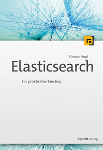It's now 20 months that I am working as a freelancer on my own. With the end of year thing going on it's time to look back on what happened and I would like to take the chance to write about what I did, what works and what I would like to do in the future.
Why Freelancing?
During my time at university I started working for a small consulting company that specialized in open source software. I was the first employee and started working part time but even paused my studies for half a year to work full time with them. The company grew and in 2006 after finally getting my degree I joined them full time. I always enjoyed the work and dedicated a lot of my energy and time. In 2012, with around 30 employees I noticed that I needed something else. I had already switched to a 4 day work week in 2011 to have more time for myself, to learn and experiment. Though the company is still great to work with it just didn't fit me anymore.
After a long time at a company that has partly been home and family it is difficult to just switch to another company. Also I wanted to have more control over what kind of projects I am doing and I liked to have some time on my own to write blog posts and do talks at user groups and conferences. I always spent time at customer projects and often liked it so it was an obvious decision to go with freelancing.
The Start
Before I quit I decided that I wanted to do more with search technologies. I had worked a lot on content management systems and search always is a crucial part. Having done several larger projects with Lucene and Solr and even the first Solr integration in OpenCms I knew that I had the necessary experience and that I liked it.
I had minimal savings when I quit and no customers so far. Other freelancers are often surprised when I tell this and advice to only quit when you already know who you will be working for next. I guess this was some kind of hubris, I was really determined that I wanted to do freelancing and knew that there were companies who needed my help.
I started freelancing in May and had already organized to give a talk at our local Java User Group on Lucene and Solr in July. I wanted to have the full month of May for talk preparation and bootstrapping the business, all the things like getting a website, getting an accountant and so on. Unfortunately I didn't find a project until the beginning of July with a lot of my savings already spent on living cost and necessary items for the business. Be aware that it will take you up to two months from the beginning of a project until you see the first money.
Marketing
The good thing about freelancing: I can call all the activities I like to do marketing and tell myself that those are necessary. The bad thing about it: I don't spend enough time on paid projects.
I am spending lots of my time that is not paid for on learning: Blog posts, books and conferences. I got to a quite frequent rhythm with weekly posts, spoke at several user groups and conferences and joined an open source project, OdfToolkit. A lot of freelancers don't do any of those and dedicate all their time working on customer projects but those activities are part of the reason I went with freelancing.
The Projects
When talking about freelancing you probably think about sitting in the coffee shop, doing several projects in parallel. For me this is different, lots of Java projects are rather long term and require you to work in a team, which is best done on premise. Though I like the idea of doing more diverse projects I am also happy to have some stability. Having long term clients prevents some of the context switching involved with multiple projects and you have to spend less time on sales.
My first project involved working on an online shop for a large retailer built on Hybris, a commercial Ecommerce engine. I did a lot of Solr stuff and though it was rather stressful working on product search was really interesting. Also the people are nice.
Though I started with the intention of doing more search projects I am currently involved in a large CMS project for a retailer, (re)building parts of their online presence. Search only plays a minor part in it but I like working with the people, it's a great work atmosphere and some of the problems they face are really interesting. Before doing the project I had to think a lot whether I want to sign this long term contract but I am glad I did. Fortunately I still have time to do some short term consulting on the side (mostly single days, mostly Solr).
Where Do I Get The Projects From?
When starting I thought it would be a lot easier to get projects but customers are not exactly magically lining up to get my services. I try to avoid working with freelance agents, though a lot of Java projects are only possible to get through them. Most of the project inquiries I get directly are from people who know me from organizing the local Java User Group. I didn't start helping the user group for the marketing but I have to admit, it really paid of.
Besides that I am still working for customers of my old employer. They contact me with interesting projects and though of course they are taking their share I still earn enough for myself.
Most of the inquiries I get from agencies, mostly through my XING profile are for Hybris and CoreMedia, two of the commercial systems I did work in. I enjoy working with CoreMedia and could imagine to do projects with Hybris again but I would be far more happy if agencies contacted me for Lucene, Solr or Elasticsearch.
There have been some inquiries from people who found me through my blog but never something that was really doable (mostly overseas). Speaking at user groups and conferences has led to some contacts but never to a real project so far. So you could say that the marketing activities I spend most of my time on didn't pay off. But getting direct projects is not the only benefit of both of these activities. Those are also important for me for learning and growing.
The Future
Freelancing has been exactly the right choice for me. I managed to find projects where I can do my 4 day work week, leaving enough time for blogging, preparing talks and learning. I managed to do weekly blog posts for quite some months during the year, cut back a bit because it became overwhelming. Starting with the new year I hope I can get back to more frequent posts. Also, I'll be submitting talks to conferences again and hope that I can find more time to work on the OdfToolkit.
I'll be staying with my current client for as long as they need me but I am determined to only do search centric projects afterwards. Also I am planning to do a bit of work in other countries in Europe with a special twist. Watch this blog for the announcement.
When starting with freelancing you have a lot of questions and even simple things can take some time to find out on your own. I will compile a list of resources that helped me and publish those on my blog soon. If you are just starting with freelancing you are of course also welcome to contact me anytime.









